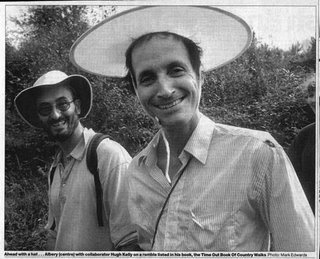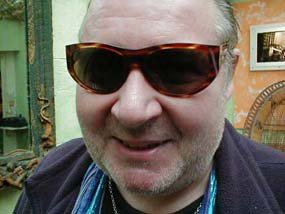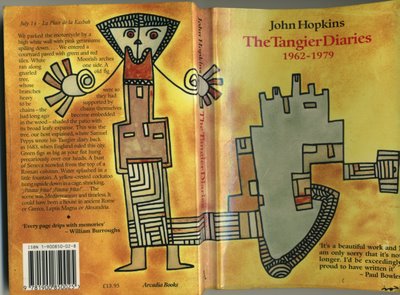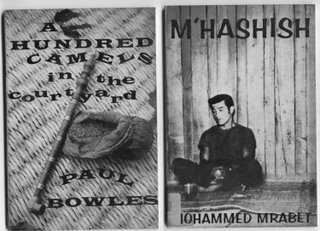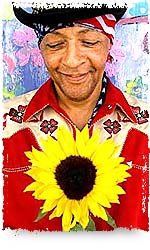The first "edition" of this guide, which became known as the "Bible of the East”, saw the grey light of dawn back in 1970 as one of BIT Information & Help Service's free hand-outs. Put together by Nicholas Albery and Ian King as a result of endless requests for information from intending travellers, it consisted of half a dozen or so duplicated foolscap sheets stapled together with one staple and no cover. Yet so successful was it, in the absence of any other source of grass-roots information, that BIT was soon receiving an average of six letters per week from travellers all along the route.
These letters, with their valuable up-to-date information, formed the basis of the rapid succession of up-dates and expansions which the guide went through over the next two years. By the time I arrived at BIT to write the ‘72 edition it had grown to such a size that the cost of putting it together demanded that BIT charge a "minimum donation" of £0.50 per copy. We thought at first that having to make a "donation" would put people off. Quite the opposite. So eager were people to get hold of a copy that they regularly left double what was asked in order to support BIT's activities.
Arriving at BIT to write my first edition I was confronted with over 200 letters from travellers which had accumulated in the overflowing files, the scruffiest "office" I’d ever seen before - or since, several sleeping bags full of snoring human beings on the floor, an arthritic IBM electric typewriter which frequently threw fits and the sound of night-shift worker Jimmy Red's inimical style of guitar drifting up from the room below.
It seemed an impossible task but three weeks later it was ready — all 100 pages of it, double- sided. Nicholas and I spent the next 48 hours drinking wine and smoking mushrooms non-stop while we churned out a thousand copies of the new guide on the second-hand manually-operated duplicating machine. Though it was necessary to hike the "minimum donation" to an unprecedented £1 per copy, it was a phenomenal success and competed with Nepalese Temple Balls as the most sought-after commodity on The Road to Kathmandu. The money from the guides was ploughed back into supporting BIT's activities.
What was BIT? No-one will ever succeed in defining what BIT was if only because it refused to be confined by any definitions but Rick Crust once made a brave attempt. He wrote of it:. "We know this guide costs lot of money and you really can’t afford it but we gotta get money from somewhere and this guide is our main source of income. We 're open every day of the year from 10am to 10pm (telephone 24 hours) and we give free help and information about anything to anyone who wants it. Dirty, untidy office; friendly, sometimes exuberant atmosphere, inefficient staff, confused clientele, aggressive cat. Free information, free bogs, free bath. free duplicator and typewriter, free kittens and puppies, free clothes, free food — cheap at other times but free if you're really starving, free people to talk to, free alternative library, free day-room to freak out in or sleep in, free crashpad, lots of other free floor space depending on the season, free optimism, free ecstasy, free lots of other things plus expensive travel guides to pay for it all."
More specifically, it was a constantly changing collection of drop-outs, misfits, visionaries, deviants, information freaks, students, runaways, travellers, electronics whizz-kids and even "normal" people from all over the world, none of whom were paid and many of whom worked all hours God sent. Apart from social welfare, info on jobs, housing, squatting, social security, the law and health, BIT could also supply information on anything from geodesic domes and herbal remedies to how to mend your bike when you got stuck on the Yorkshire Moors. It would even mend your television set for you.
Some of the babies which it nurtured through to independence included the Commune Movement, COPE (an anti-psychiatry info and help service for mental patients and people suffering from mental problems, run by ex-patients), the Arts Labs Newsletter and CLAP ("Community Levy for Alternative Projects" which raised over £30,000 for radical and imaginative projects throughout Britain by asking readers of a regularly published list of projects needing money to give 1% of their income to the projects of their choice. Successful projects were asked to do the same though few ever did).
For none of this work did it ever receive any financial support from government authorities nor did it want such strings-attached grants. It was occasionally given £500 or £1,000 by a rock star (Paul McCartney & Pete Townsend in particular) or by a charitable trust but for its main income it was forced to rely on the travel guides. It's bills were enormous – always.
Back to the guides. By 1974, when I came to work full-time at BIT, the India guide was generating an incredible average of twelve letters per week. The task of getting all that extra information into the guide was beginning to occupy 25 hours a day but it wasn’t that which forced a change of format. By early 1975, it had grown to over 200 foolscap pages still stapled together with one staple and no cover. It weighed a ton and was so bulky we began to doubt whether there would be room in a traveller's rucksack for anything other than the guide.
Also, in order to keep up with demand, we'd worn out two duplicating machines and were entirely reliant on the gullibility of successive IBM or Gestetner representatives who we could persuade to deliver us a new machine for a couple of days "on trial". No machines in the history of technology have ever been subjected to such a rigorous "trial". In the short time they were left with us, we managed, one way or another, to coax well over half a million sheets out of them. But that was only the start of the work since then the sheets had to be collated - by hand. The donkey's back was about to break so, after several stormy meetings of the collective we decided to go into print after I’d re-written and up-dated the whole thing.
In mid-1975 I set out to do this against impossible odds. The odds included a pirate radio station which broadcast from the room next door and frequently attracted posses of axe-wielding Metropolitan police bent on destroying everything in sight; bus-loads of travellers constantly banging on the door in search of up-to-the-minute information on everywhere from Istanbul to Port Moresby, some of whom brought me a little something to smoke (bless them!); a friend who daily needed an ear to pour stories into and who would march me off to the pub by lunch-time and leave me incapable of doing anything by mid-afternoon, and, of course, the demands of doing shift-work at BIT. Remarkably, it was ready within six weeks though we weren’t too sure what the printer would think of the copy as it was done on the same arthritic IBM electric I’d struggled with three years ago and which had become even more cantankerous with advancing age. Nevertheless, Ian King, our printer, did a beautiful job. I retired to the country for half a year exhausted.
The new guide was even more of a success than the old though because of increased costs we had to hike the "minimum donation" to a swingeing £2 plus 10% "CLAP Tax" (CLAP - Community Levy for Alternative Projects). It was about this time that many other guides to the England - India - Australia route started to appear. They varied from good to garbage and many of them were thinly disguised rip-offs of the BIT guide. We even got one letter from a nasty piece of work in California enclosing $25 and saying thanks for the information, he was going to print and sell it himself. But there were other, constructive, developments which BIT supported such as the Italian translation which was brought out by "Stampa Altemativa" — Italy's equivalent of "International Times".
By early '77 another vast pile of travellers’ letters had accumulated and I put them together in a separate up-date section which we stapled into the main guide. After that I lost touch with BIT for a while and went to South America for a year with the intention of writing a guide to that area of the world ("South America on a Shoestring", Lonely Planet, Jan. '80, pp 442, £3.95, available from Magic Ink).
When I got back, BIT was in dire straights and teetering towards the edge of the precipice having been taken over by a bunch of petty crooks, speed freaks, rip-off artists, winos and cider freaks. It was a sight for suppurating eyes. A short while later, from the end of '79 and early 1980 it finally folded, after receiving the most outrageous telephone bill you can imagine. But the idea didn't die and the files are still intact.
On hearing of this, Ian (our printer) and I, unwilling to see the guides die after all that effort by the thousands of travellers who've written in over the years and are still writing in - keep those pens busy, please! - decided to take over the running of the guides. So keep those letters flowing This guide is only as good as the letters which we receive from you. It’s you who have made it into what it is and only you who can keep it that way - that is, up- to-date and containing the sort of information you want to find in it. There are plenty of other guides to this route available but they're all one-person affairs and none of them have anywhere near the same volume of feedback as the BIT guide and so rapidly go out of date. Feedback is what keeps it alive and always has. If the day ever arrives when it ceases to be a mirror of traveller's experiences and an exchange of information then we’ll lay it down to rest and leave you in the hands of the strictly commercial boys.
Meanwhile here is the latest completely re-written and up-dated BIT guide. Unlike all the previous editions which have been dragged screaming from various seedy West London basements on the crest of eviction orders, this one was put together in a semi-derelict, Morning Glory-covered, former banana shed in the depths of the rain forest in northern New South Wales, Australia. This time it’s taken three months to put together but then it is twice the size and, as there's no electricity here and half of every day is spent keeping lantana, groundsel, leeches, land mullets and 6ft-plus pythons at bay, it's not altogether surprising.
Geoff Crowther (Editor)
Australia.
March 1980.

